Famous for its stunning architecture, the Acropolis also houses numerous myths and legends. Join me and uncover the hidden histories of this ancient marvel.
The Acropolis is a reason in itself to travel to Greece.
It’s one of the premier monuments in the world.
Iconic structures such as the Parthenon, the Erechtheion, the famous Caryatids, and the Propylaea define its landscape.
At the same time, the Acropolis is considered the Sacred Rock of Athens.
For humanity as a whole, it represents much more.
It is the cradle of Western civilization, with a history of 2500 years and roots that reach back nearly 5000 years ago.
Millions of visitors arrive at the Acropolis every year to admire the ancient monuments and to tour the amazing Acropolis Museum that faces the Parthenon.
Myths and Secret Histories
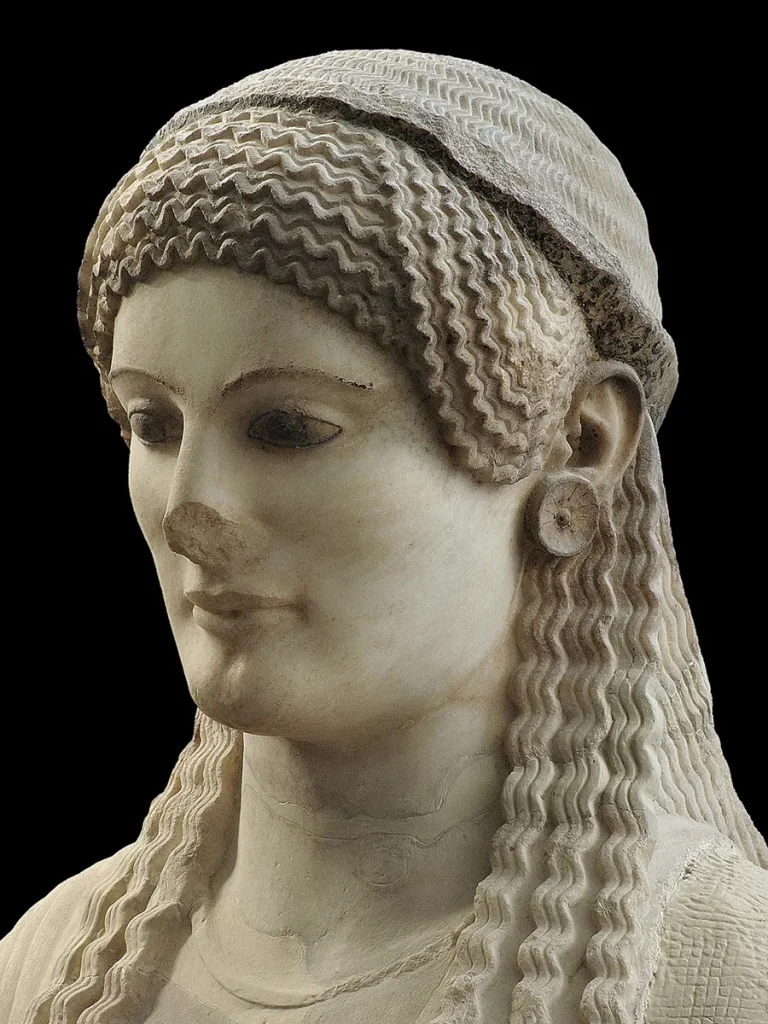
In this article, however, we won’t talk about what most guides will reveal to you.
Here you will learn about the Acropolis myths and legends, as well as unknown aspects of the history of this unique monument.
However, keep in mind that myths are, after all, just myths.
If you truly want to understand everything about the Acropolis and its history, consider booking a tour with a licensed guide.
This will be by far the best investment you can make while in Athens.
The tours I recommend are two: Athens: Acropolis, Parthenon, & Acropolis Museum Guided Tour or Athens: Acropolis & Museum Tour with Optional Entry Ticket.
Now, are you ready for some legends?
Let’s begin!
1. The Unknown Pre-Parthenon
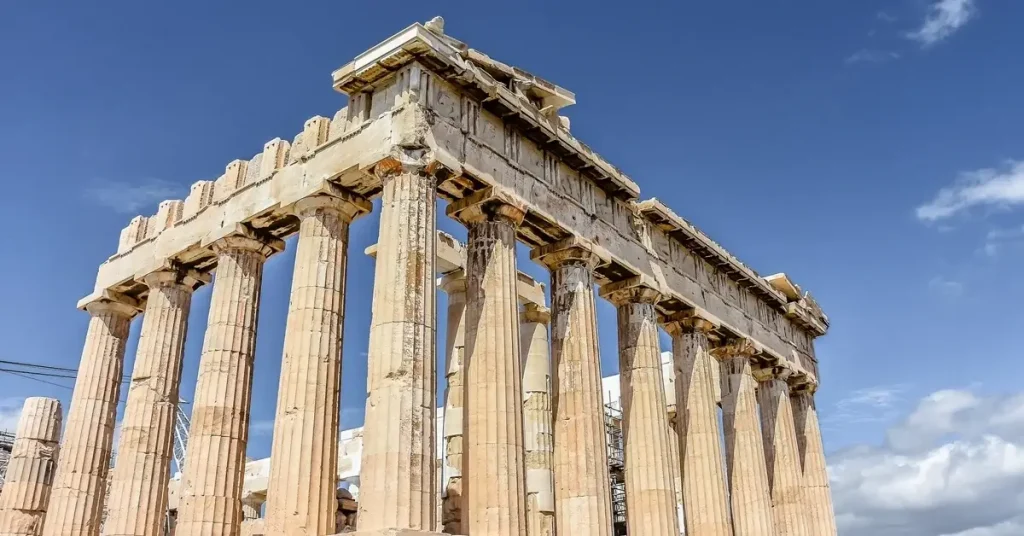
The Parthenon, which you can see today dominating the top of the Acropolis of Athens, began construction in 448 BC and was completed ten years later, in 438 BC.
Its creators and designers were two leading architects of Ancient Greece, Ictinus and Callicrates.
The appearance of the Parthenon at that time was very different from what it presents today after successive destructions over the millennia, as well as due to natural wear and tear over time.
Back then, it was an enclosed temple, with a vivid presence of colors and an extremely rich sculptural decoration.
It wasn’t, however, the first ancient temple built on the Acropolis.
Around 560 BC—nearly 130 years earlier—Athenians erected the first temple on the site where the Parthenon stands today.
They also dedicated it to the goddess Athena, the patroness of the city of Athens.
Around 520 BC, Athenians constructed another large temple north of the first one, depicting the famous Gigantomachy on its pediments.
Over the following years, it appears that demolitions destroyed these two temples, neither of which were made of marble.
They were made of poros, a limestone material.
The first marble temple

After the famous Battle of Marathon between the Greeks and the Persians in 490 BC, the first marble temple began to be built on the ruins of the two temples.
The unknown to most Pre-Parthenon, however, would never be completed.
That’s because in 480 BC, the Acropolis of Athens would experience a total destruction.
The Persians, after their victory at the Battle of Thermopylae, invaded and plundered Athens.
They destroyed almost everything on the Acropolis.
For nearly 40 years, the Acropolis remained without any imposing building.
Until 438 BC, when the Parthenon we know today began to be built, to emerge as a monument that would define the history of Humanity.
A little-known story that certainly does not fall among the Acropolis Myths and Legends, as it has been historically verified.
2. The Lost Room of the Virgin
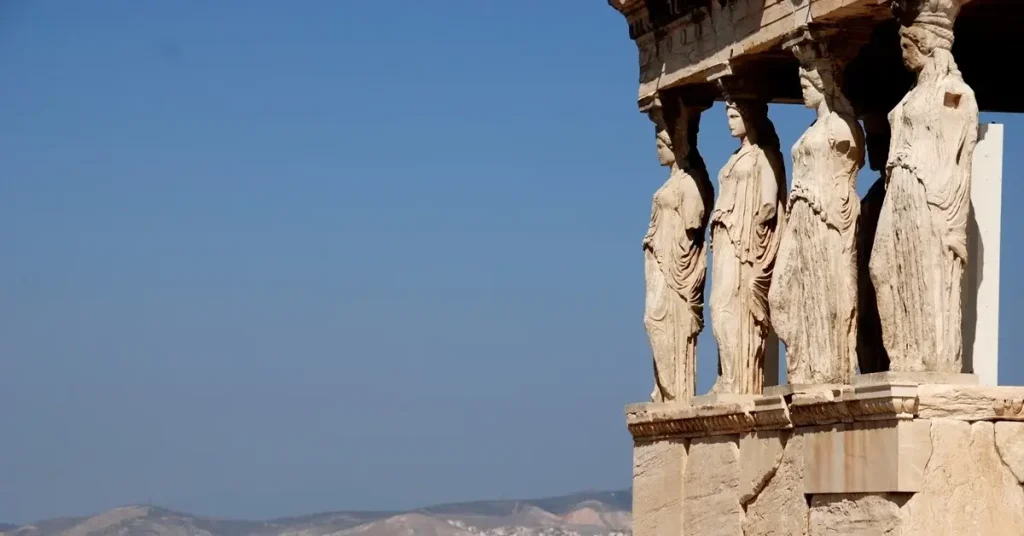
Many speak of the Parthenon, but few know what the word means in ancient Greek.
Parthenon meant “the room of the virgin”.
According to Acropolis myths and legends, inside the Parthenon there was a room where only four virgin girls dedicated to the goddess Athena could enter.
Their mission was to dress the statue of the goddess Athena with the peplos from the Arrhephoria (an ancient festival of Athens dedicated to the goddess).
The Acropolis myths and legends surrounding the origin of the name do not stop here.
According to other sources, the name Parthenon comes from the virgins, whose sacrifice ensured the safety of the city.
What is certain is that people did not call the Parthenon by that name when it was first built.
Documents from the 5th century refer to it as “the Temple.”
While its architects, Ictinus and Callicrates, gave it the name “Hekatompedos”.
Only in the 1st century AD does the historian Plutarch refer to the building using the name “Hekatompedos Parthenon”.
3. The Mystery Around the Chryselephantine Statue
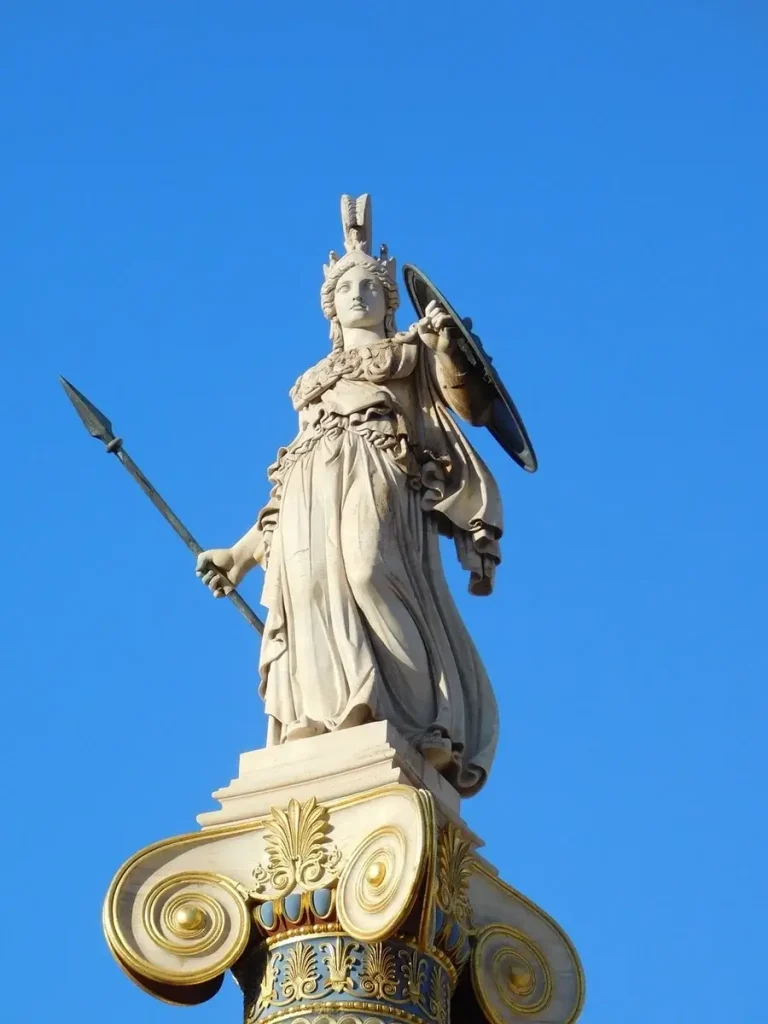
Inside the Parthenon stood the Chryselephantine (meaning “made of gold and ivory”) Statue of the goddess Athena.
It was a 13-meter-tall work by the top ancient sculptor Phidias.
Its torso was made of ivory, while its garment and hair were made of 1140 kilograms of gold.
The Athenians had the opportunity to celebrate it only during the city’s festivals.
One of the Acropolis myths and legends is how the statue was destroyed.
Some sources speak of a great fire that broke out inside the temple in the 3rd century AD.
Others claim that the Romans removed it in the 5th century AD.
And others say that it stood in the Parthenon until the 10th century, when someone transferred it to Constantinople.
What is certain is that no one ever found a single piece of it.
A fact that means that some benefited both from the ivory and the gold.
A copy of it from the 2nd century BC, just one meter high, which has none of the splendor of the original, was discovered in 1880 at the Varvakeion Lyceum and is housed in the National Archaeological Museum.
A story of betrayal (?) or corruption
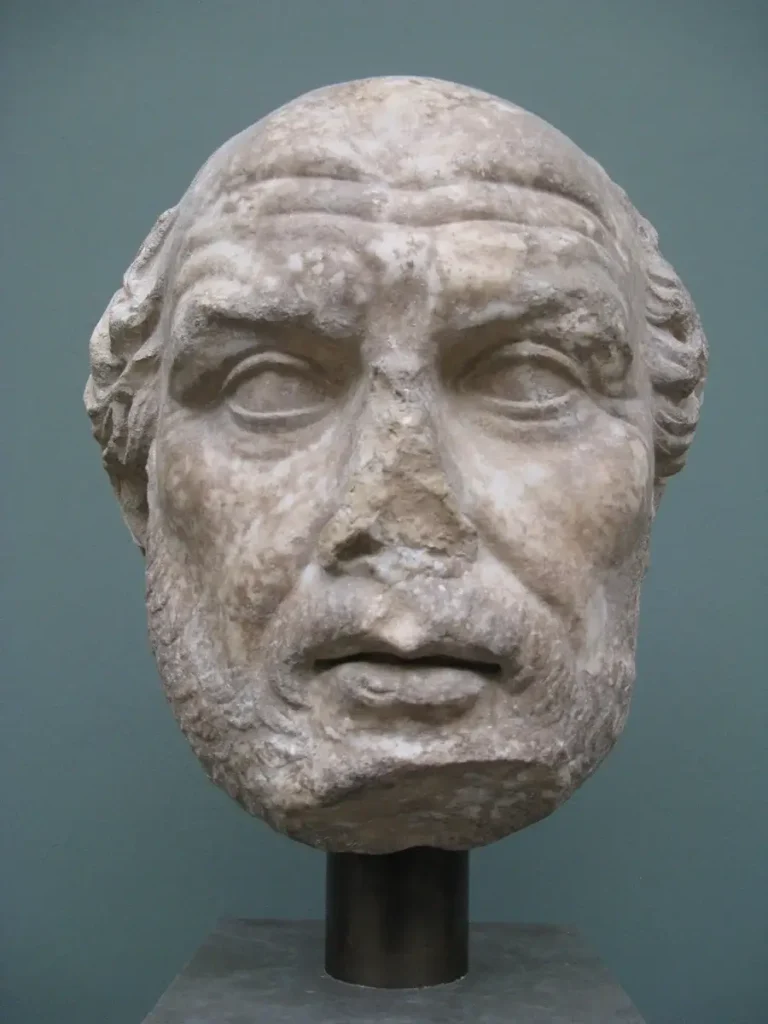
Behind the story of the statue, however, lies a story of betrayal (?) or corruption (?), which concerns the creator himself, Phidias.
The Parthenon was a vision of Pericles, who had then established Democracy in Athens.
He entrusted Phidias with the entire sculptural decoration of the Parthenon.
Pericles’ political opponents accused him of embezzlement and misuse of public money on the pretext of the Parthenon.
Phidias was accused of stealing part of the gold given to him to dress the statue.
He then asked the court to remove all the gold and weigh it to prove his innocence.
He was vindicated.
However, his opponents accused him again of offending the gods, since Phidias had engraved on Athena’s shield two figures that resembled Pericles and himself.
He was convicted.
Angrily, Phidias left Athens and went to Olympia.
There, he created his greatest work.
The Chryselephantine Statue of Zeus.
One of the Seven Wonders of the Ancient World.
4. The Secret History on the Frieze and… the Mummy

The Parthenon frieze uniquely depicts the religious procession of the Panathenaic Festival.
It was the greatest celebration of ancient Athens, during which the peplos was presented by the people of Athens to their patron goddess Athena.
Unfortunately, the complete frieze no longer survives to our day.
50 meters of it are in the Acropolis Museum, and 80 meters are in the British Museum, with ongoing demands for their repatriation.
Additional fragments can be found in the Louvre Museum, as well as in museums in the Vatican, Palermo, Vienna, Heidelberg, and Munich.
While the frieze officially depicts the Panathenaic procession, there exists a theory suggesting a different story among the representations.
It’s another of the Acropolis myths and legends, rooted in Egyptian mummies!
According to Professor Joan Connelly of New York University, hidden in the frieze is a story unrelated to the Panathenaic Games.
At least, this is revealed by an ancient papyrus found in an Egyptian mummy.
In ancient Egypt, common mortals were mummified with cheaper materials, such as papyri bearing various texts.
One of these revealed, millennia later, 250 verses from a lost play by Euripides, according to this specific theory.
It’s the story of Erechtheus, the mythical king of Athens.
During the first invasion and siege of the city by the barbarian Thracians, Erechtheus sought guidance from the Oracle of Delphi and was told that he must sacrifice his youngest daughter to win the battle.
Connelly surprisingly discovered this story in one of the frieze’s representations, depicting a family preparing to sacrifice the youngest daughter.
The sacrifice of a virgin.
Of course, even if such a representation exists, its origin from a lost work of Euripides hidden within an Egyptian mummy remains one of the Acropolis myths and legends.
5. The Mystery of the Light
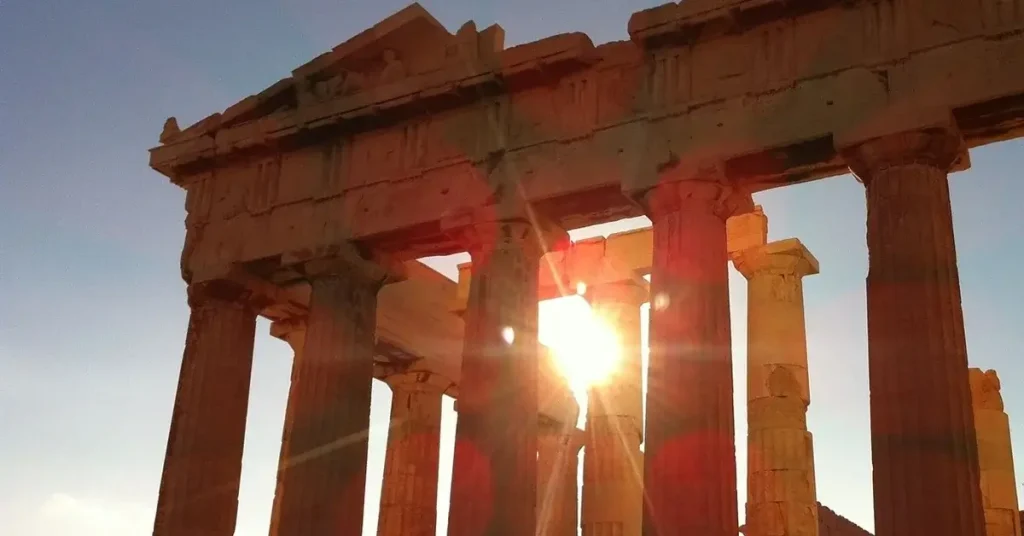
Today, as mentioned earlier, the Parthenon does not resemble its ancient appearance.
Its main difference was that it was an enclosed monument in ancient Greece.
It was covered on top and had no windows.
So, the question arises: where did the light come from?
One theory suggests it came from the temple’s large open door.
However, this seems insufficient since, when the door was closed, the interior must have been plunged into darkness.
Others have spoken about the use of torches, a theory also dismissed due to the absence of soot marks.
The prevailing view suggests the existence of an opening in the roof, called the oculus, through which it is speculated light brilliantly entered.
But this also remains one of the Acropolis Myths and Legends.
However, it might not have been considered mythical if in 1687 the Acropolis had not experienced the worst destruction in its long history.
At that time, Athens, like all of Greece, was under Ottoman occupation.
The Ottomans had respected the Acropolis and the Parthenon by preserving its external appearance.
The Parthenon was still an enclosed temple at that time, but it hid a secret inside.
The Ottomans had converted it into an ammunition storage, hiding inside 500 barrels of gunpowder.
The Doge of Venice, Francesco Morosini, who was at war with the Ottomans, knew this.
So he decided to strike the temple, violating every moral rule and disregarding its invaluable cultural value.
Thus, on September 26, 1687, at 7 PM, a shell pierced the roof of the Parthenon, literally blowing it up.
6. The Numbers Behind Perfection
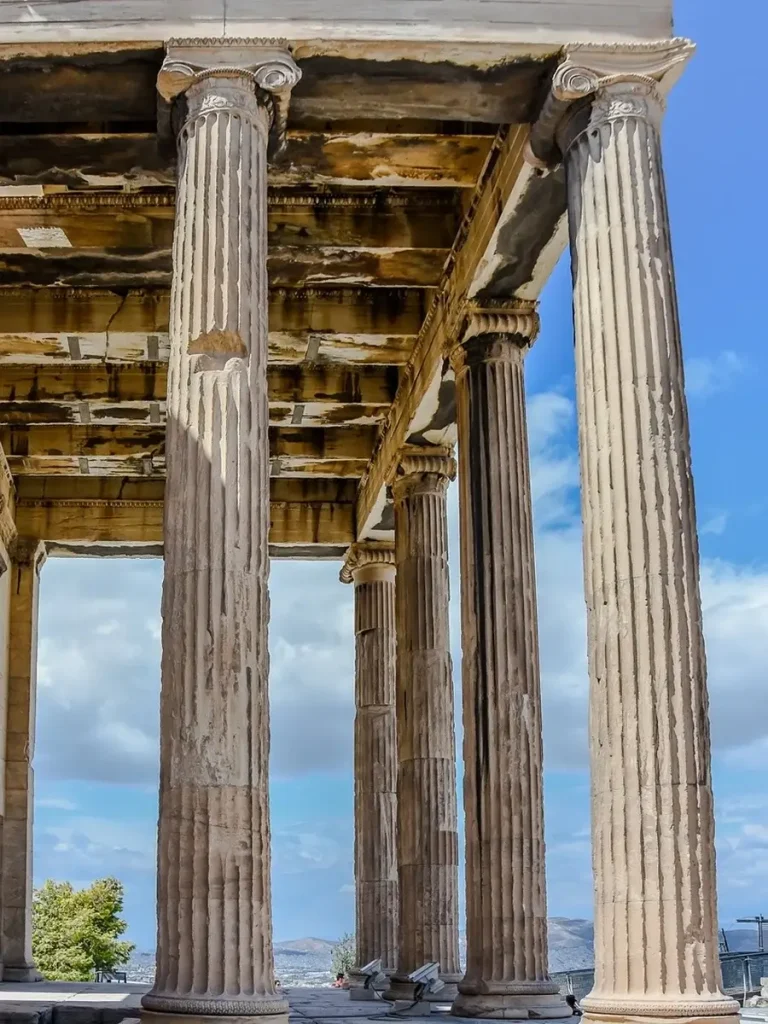
Many consider the Parthenon to be a perfect work.
Perfect based on mathematics, not aesthetics.
What do I mean?
Every proportion of the Parthenon follows the famous Fibonacci sequence.
According to this, each number is the sum of the two preceding ones: 1, 1, 2, 3, 5, 8, 13, 21, 34, 55, 89, 144, etc.
The Athenians made nothing randomly in the Parthenon.
Within its architectural perfection, we also encounter two more pivotal numbers for the entire theory of the creation of the world.
The π, which equals 3.1415…, a known mathematical constant that tends towards infinity.
A transcendental number that follows no pattern.
And the Napier’s constant e = 2.72, another irrational number, pivotal for the entire science of mathematics.
Therefore, the mystery arises: how did the creators of the Parthenon manage to include these three unique numbers with such detail and precision in an era when mathematical science had not extensively studied them?
Well, here you can find a scientific explanation.
But don’t spoil the fun—let’s continue with the Acropolis myths and legends.
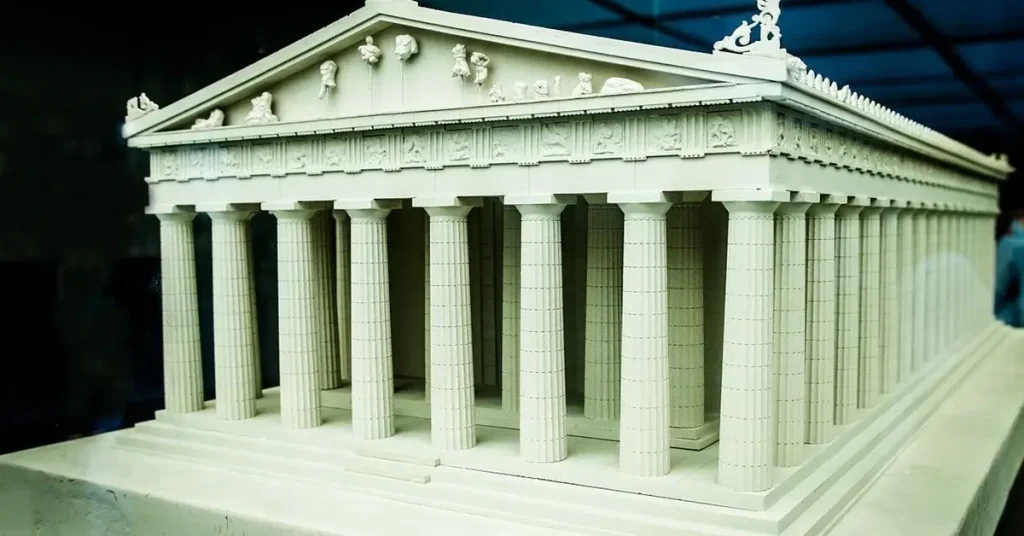
So, consider this: there is not a single straight line in the Parthenon, although someone might declare certainty about it.
On the contrary, there are subtle and even invisible curves.
Thus, if one looks at the Parthenon from a certain angle, it may seem as if the temple is rising into the air.
This is an optical illusion accurately calculated by Ictinus and Callicrates.
7. The Unknown Network of Underground Passages

One of the Acropolis Myths and Legends claims an extensive network of underground passages beneath the Acropolis, spreading throughout Attica and reaching the sea.
Naturally, access to these passages is not feasible today, while most lead to dead ends.
Various theories, however, suggest that these passages were once fully operational.
They even cite a written testimony by Pausanias from the 2nd century AD, stating that “in the Erechtheion, there is a well-shaped like a trident, through which, whenever a southern wind blew, sounds of waves were heard”.
Thus, they conclude that even today there is a secret communication of the Acropolis with the sea.
They also cite sources according to which these secret passages were used many times by the fighters of the 1821 Greek Revolution, as well as by various bandits.
8. Birds and Clouds… Nope

Finally, one of the main Acropolis myths and legends claims that no birds fly over the Acropolis.
The reason is the… particular magnetic fields emitted from the hill.
The same “observers” also claim that no dark clouds gather over the Acropolis.
And that the ancient Athenians, when they wanted to make a weather forecast, never looked at the sky above the temple.
And this because the sky above the Acropolis was always crystal clear.
However, we have seen both birds and clouds above the Acropolis…
The Truth Behind the Myths
Beyond the allure they hold, as I mentioned at the beginning of this text, myths are just that—myths.
If you want to learn the truth about the Acropolis, to deeply understand why it is considered uniquely significant worldwide, and to enrich your visit, then a guided tour would be extremely beneficial.
You can check either the highly-rated ‘Athens: Acropolis, Parthenon, & Acropolis Museum Guided Tour‘ or the ‘Athens: Acropolis & Museum Tour with Optional Entry Ticket‘.
Finally, you can find more interesting tours for your stay in the ‘Are Athens Tours Worth the Cost?‘ guide.
Make Your Trip Easier
Airport Transfer
If you want to get to and from Athens Airport with peace of mind, I recommend pre-booking your taxi with Welcome Pickups. Their flat rate is a few euros more expensive than random taxis, but it is totally worth it. They use local, English-speaking drivers, who will wait for you even if your flight is delayed and introduce you to the city during your ride.
Accommodation
I always book my accommodation through Tripadvisor. It compares prices from multiple booking platforms, like Booking.com, Agoda, Trip.com, etc., so you can easily find the best deal. It’s the simplest way to make sure you’re not overpaying.
Activities
From day trips to Greek islands to Acropolis Guided Tours, GetYourGuide will help you find some unique ideas for your trip.
Car Rental
If you decide to rent a car while in Athens, check Rentalcars. It compares the most reliable companies and returns the best prices with free cancellation.
Free Athens Tours
If you have limited time or want a local guide to introduce you to the city, check GuruWalk. They offer free tours, and at the end, you give them the amount you think is fair.
Travel Insurance
Travel insurance will protect you if you get sick or injured while abroad, or if you lose your luggage or your flight is delayed. On my trips, I use SafetyWing as it’s affordable and has a simple claims process.
Sunny Athens is reader-supported. Some links on this page may be affiliate links, meaning we may earn a small commission at no extra cost to you, if you make a purchase. This helps support our work and keeps our travel tips honest and independent. Learn more in Advertise Disclosure.







